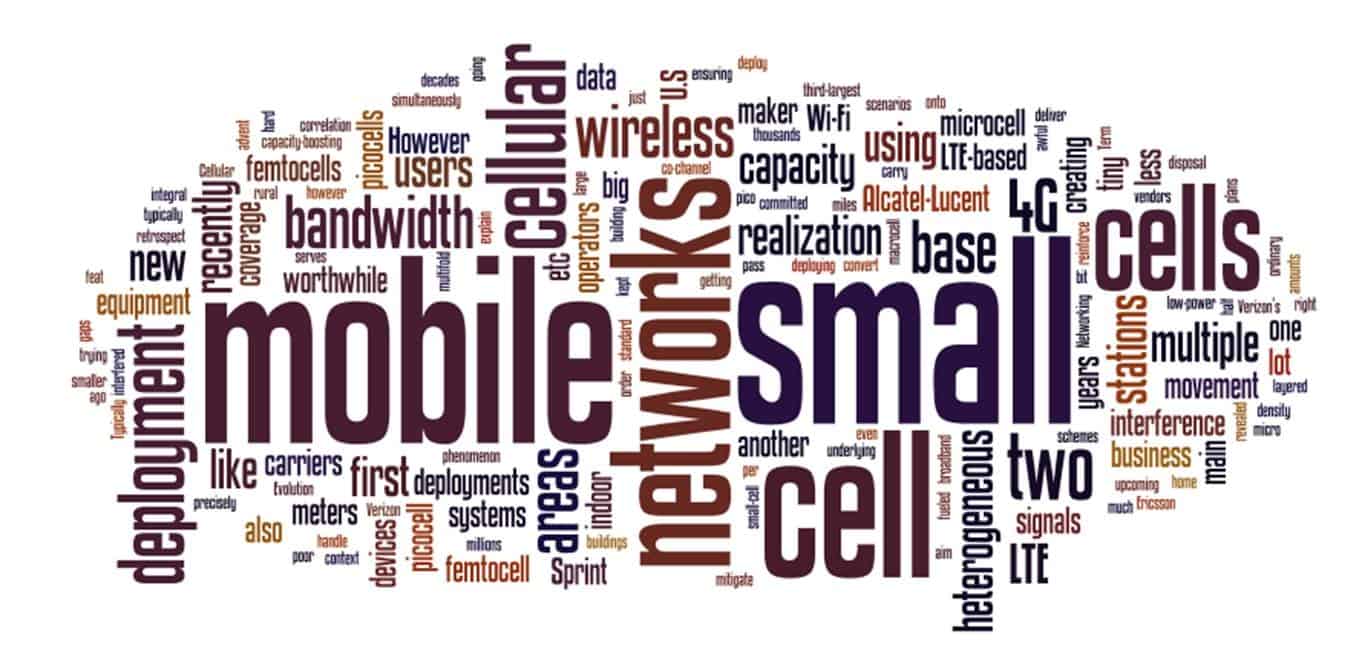 By Majeed Ahmad, Author of Essential 4G Guide: Learn 4G Wireless in One Day and Former Editor-in-Chief for EE Times & Telecoms Products
By Majeed Ahmad, Author of Essential 4G Guide: Learn 4G Wireless in One Day and Former Editor-in-Chief for EE Times & Telecoms Products
Wireless equipment maker Alcatel-Lucent has recently revealed about the deployment of small cells in both indoor and outdoor locations at Verizon’s cellular network. AT&T has also committed a while ago to deploying 40,000 tiny base stations in its wireless network over the course of next two years. Likewise, the third-largest U.S. mobile carrier Sprint has recently announced plans to deploy these tiny capacity-boosting base stations in its wireless network.
It’s worthwhile to note that, like AT&T and Sprint, it’s just recently that Verizon has started building its Long Term Evolution (LTE)-based fourth-generation (4G) wireless network. So is there a correlation between the advent of the LTE-based 4G networks and the long-anticipated commercial realization of small cell movement? If that’s the case, the question is why now? Why in 2014?
So, in the context of a new cellular architecture for 4G wireless, it would be worthwhile to explain the concept of small cell networks. If there is a single tech phenomenon that serves as the underlying technology for the realization of LTE-based 4G networks, it is the idea of small cell networks.
A New Cellular Architecture
The first critical juncture in mobile industry’s quest for multifold increase in capacity and flexibility of cellular networks came with the realization that the big tower-based macro-umbrella networks that fueled two decades of voice services weren’t going to cut it in a data-centric world. So mobile carriers and infrastructure vendors like Ericsson and Alcatel-Lucent began designing new types of small cells and base stations intended to deliver intense levels of bandwidth over limited areas. These small cell deployments—pico, micro, metro, femto, etc.—were to evolve into the new heterogeneous network, or HetNet, which would transform cellular systems from coverage- to capacity-focused systems. This implied that the upcoming broadband mobile networks would carry hundreds of thousands if not millions of cells.
LTE became a driving force behind the small-cell movement. In retrospect, mobile operators could have created far more capacity if they deployed smaller cells, reusing the spectrum they had to the nth degree. However, they couldn’t build the density of cells necessary to support the demands for mobile data. It was a hard feat to pull off because at any time, when two signals used the same frequency in the same space, there would be interference. So, for several years, the mobile industry had been trying to figure how to mitigate that interference. That’s why it took so long to convert an ordinary picocell into a true small cell. Now, instead of cramming picocells onto cellular gaps, mobile operators will mount picocells on lamp posts and buildings, right under the gaze of macro towers with which they will share the airwaves.
At first, small cell network will function much like an extension of the large cell counterparts. The network will pass mobile users from big cell to small cell and vice versa. However, the key difference is that when mobile users occupy the small cell, they will have a lot more bandwidth at their disposal. Mobile devices will be able to link to multiple cells simultaneously, and the same signals that once interfered with one another will reinforce one another creating an even more powerful connection. The high-capacity Wi-Fi networks will also get layered in, creating a heterogeneous network in which mobile devices could establish multiple simultaneous connections using multiple radio technologies. Apparently, that boils down to an awful lot of bandwidth.
With revenue per bit falling, costs for deployment must be kept to a minimum while ensuring that the network is operating to its greatest efficiency. So femtocells and other microcell schemes are an integral part of the LTE deployment strategy. A femtocell is a small, low-power cellular base station, typically designed for use in a home or small business. Typically, the range of a standard macrocell is up to 35 kilometres or 22 miles; a microcell is less than two kilometers wide; a picocell is 200 meters or less; and a femtocell is on the order of 10 meters.
In 2013, the U.S. mobile carriers were getting ready for their first small cell deployments with an aim of implementing multi-technology heterogeneous networks. The two main deployment scenarios for small cells are in rural areas with poor or no indoor coverage, probably using co-channel deployment, and in dense areas to provide high data rates and capacity. The main goal of these shrunken cells, however, is to put massive amounts of bandwidth precisely where mobile users were using it: shopping malls, public areas, business districts, etc. Networking equipment maker Cisco estimates that Wi-Fi and femtocells will handle nearly half of all mobile traffic by 2017.
 Contributed by Majeed Ahmad, author of Essential 4GGuide: Learn 4G Wireless in One Day. Majeed is former Editor-in-Chief of EE Times Asia and Telecom Products. He has been writing about technology and trade for more than 18 years. His new book “Age of Mobile Data” is about the data-centric 4G networks, and is going to be launched next month.
Contributed by Majeed Ahmad, author of Essential 4GGuide: Learn 4G Wireless in One Day. Majeed is former Editor-in-Chief of EE Times Asia and Telecom Products. He has been writing about technology and trade for more than 18 years. His new book “Age of Mobile Data” is about the data-centric 4G networks, and is going to be launched next month.












